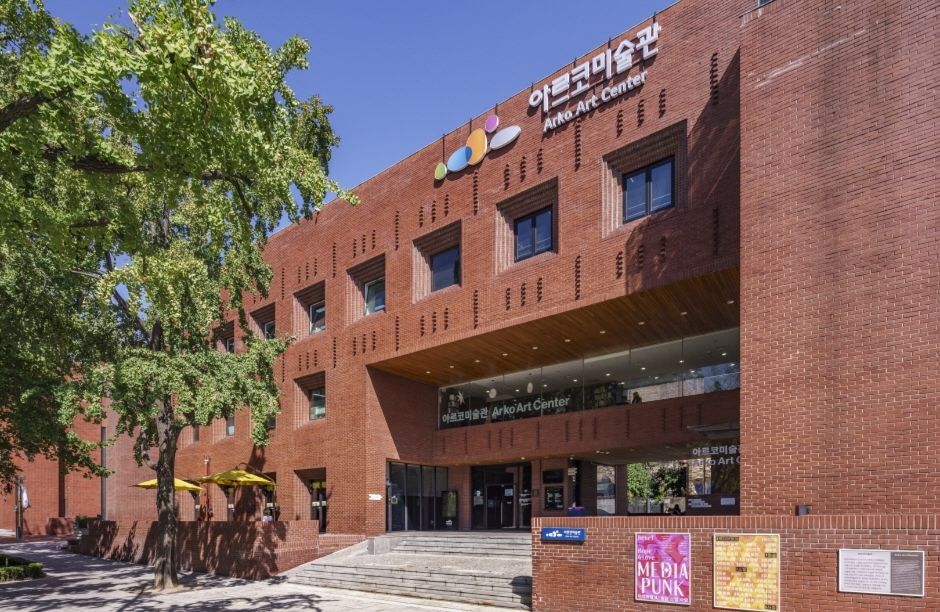Bright St. Mary’s Eye Center (밝은성모안과의원)
9.1Km 2025-11-28
3rd, 16th, 17th, and 18th Floors, Cambridge Building, 110 Teheran-ro, Gangnam-gu, Seoul
Bright St. Mary’s Eye Center opened in 2000 and has been a trusted leader since the early generation of vision correction surgery in Korea. With decades of experience and a strong clinical track record, we provide safe, precise procedures such as LASIK, LASEK, and SMILE LASIK using advanced technology.
To ensure both surgical accuracy and a satisfying patient experience, we offer state-of-the-art equipment, highly experienced specialists, reasonable procedure costs, and a comprehensive postoperative care system.
Recognized by patients from Korea and around the world,
Bright St. Mary’s Eye Center (Gangnam Branch) invites you to enjoy a brighter, clearer everyday life.
Seoul Eungbongsan Mountain (응봉산(서울))
9.1Km 2024-07-05
1540 Geumho-dong 4-ga, Seongdong-gu, Seoul
+82-2-2286-6061
From Eungbongsan Mountain, one can easily see the Hangang River, Seoul Forest, Jamsil Sports Complex and more in the eastern part of Seoul. With such a great view of the Hangang River, the mountain is often packed with visitors including many photographers. The mountain serves as a venue for diverse events, including a sunrise festival on New Year's Day and forsythia festival around April during the flowering season.
Bang & Olufsen - Apgujeong Branch [Tax Refund Shop] (뱅앤올룹슨 압구정)
9.1Km 2024-04-18
1F, 865, Eonju-ro, Gangnam-gu, Seoul
-
ARKO Art Center (아르코미술관)
9.1Km 2025-06-05
3, Dongsung-gil, Jongno-gu, Seoul
+82-2-760-4850
ARKO Art Center was founded in 1974 as Misulhoegwan in a building of former Deoksu Hospital in Gwanhun-dong, Jongno-gu to offer much-needed exhibition space for artists and arts groups. In 1979, Misulhoegwan moved to its present building, designed by preeminent Korean architect Kim Swoo-geun (1931-1986) and located in Marronnier Park, the former site of Seoul National University. The two neighboring brick buildings accommodating ARKO Art Center and ARKO Arts Theater are the major landmarks of the district of Daehakro.
As more public and private museums and commercial galleries came into the art scene in the 1990s, Misulhoegwan shifted to curating and presenting its own exhibitions. Renamed as Marronnier Art Center in 2002, ARKO Art Center assumed a full-fledged art museum system and played an increasingly prominent role as a public arts organization leading the contemporary art paradigm. When The Korea Culture and Arts Foundation was reborn as Arts Council Korea, Marronnier Art Center became ARKO Art Center named after the abbreviation for Arts Council Korea in 2005.
ARKO Art Center is committed to working as a platform where research, production, exhibitions and the exchange of creative activities grow and develop in connection with one another in addition to having a diversity of programs including thematic exhibitions addressing social agenda and public programs widely promoting various discourses in art.
Samsung Miracle Eye Clinic (삼성미라클안과의원)
9.1Km 2025-10-23
(7th,14th Floors), 115 Teheran-ro, Gangnam-gu, Seoul
Miracle in your eyes! World-class refractive surgery center in Seoul, Gangnam!
Samsung Miracle Eye Clinic! We will be in charge of your eye health! We present a new standard for ophthalmic treatment.
Since 2005, through over 20,000 surgical experiences and know-how accumulated for 25 years, we have led the present and future of ophthalmology only by focusing on the healthy eyes of patients.
We provide safe medical services to patients with satisfactory results, personalized medical care, and various genuine medical devices. Everything from appointment and questionnaire to consultations and surgeries is done smoothly in your language at our International Medical Center.
Seoul National University Hospital (서울대학교병원)
9.1Km 2025-10-23
101 Daehak-ro, Jongno-gu, Seoul
Seoul National University Hospital, a national central hospital that has led Korean medicine for over 130 years, is a top-tier hospital equipped with world-class medical professionals and cutting-edge systems. For 25 consecutive years, it has ranked first in brand power in the hospital sector. The hospital is renowned for its cancer research, the most comprehensive pediatric care in the country, and treatments for rare and intractable diseases. Through patient-centered, personalized services, it has established itself as a trusted healthcare institution.
Gangnam Grand Eye Clinic (강남그랜드안과의원)
9.1Km 2025-10-23
4F-5F, 363 Gangnam-daero, Seocho-gu, Seoul
Gangnam Grand Eye Clinic is one of Korea's leading ophthalmology clinics. It received the Minister of Health and Welfare Award and is ranked among the top 10 companies participating in the Korea Grand Sale event.
With the latest medical technology and highly skilled medical staff, the clinic specializes in providing customized services for international patients. It offers interpretation services in various languages, including English, Russian, Mongolian, and Chinese, ensuring a comfortable medical experience without language barriers.
With over 30,000 cases in vision correction, including LASIK and LASEK, presbyopia, and cataract surgery, the clinic's medical staff delivers satisfying outcomes without unnecessary procedures. The clinic also boasts outstanding accessibility, with its convenient location right in front of Exit 5 of Gangnam Station.
Dosan Park (도산공원)
9.1Km 2022-12-16
20, Dosan-daero 45-gil, Gangnam-gu, Seoul
+82-2-543-2558
Located in Sinsa-dong, Seoul, Dosan Park, a neighborhood park, was built in 1973 to pay tribute to Dosan Ahn Chang-ho’s patriotism. Dosan Ahn Chang-ho’s tomb was moved here from Manguri Public Cemetery as well as his wife, Lee Hyeryen, whose tomb was moved from Los Angeles. The tribute was extended by naming the boulevard from Cheongdam-dong to Nonhyeon-dong, as Dosan-daero. Visitors can find a bronze statue, monument with quotations, epitaph headstone and more within the park. Commemoration event is held on March 10th of every year.
![Snow Clinic [Tax Refund Shop] (스노우성형외과)](http://tong.visitkorea.or.kr/cms/resource/78/2879978_image2_1.jpg)

![Bang & Olufsen - Apgujeong Branch [Tax Refund Shop] (뱅앤올룹슨 압구정)](http://tong.visitkorea.or.kr/cms/resource/06/2879606_image2_1.jpg)

 English
English
 한국어
한국어 日本語
日本語 中文(简体)
中文(简体) Deutsch
Deutsch Français
Français Español
Español Русский
Русский